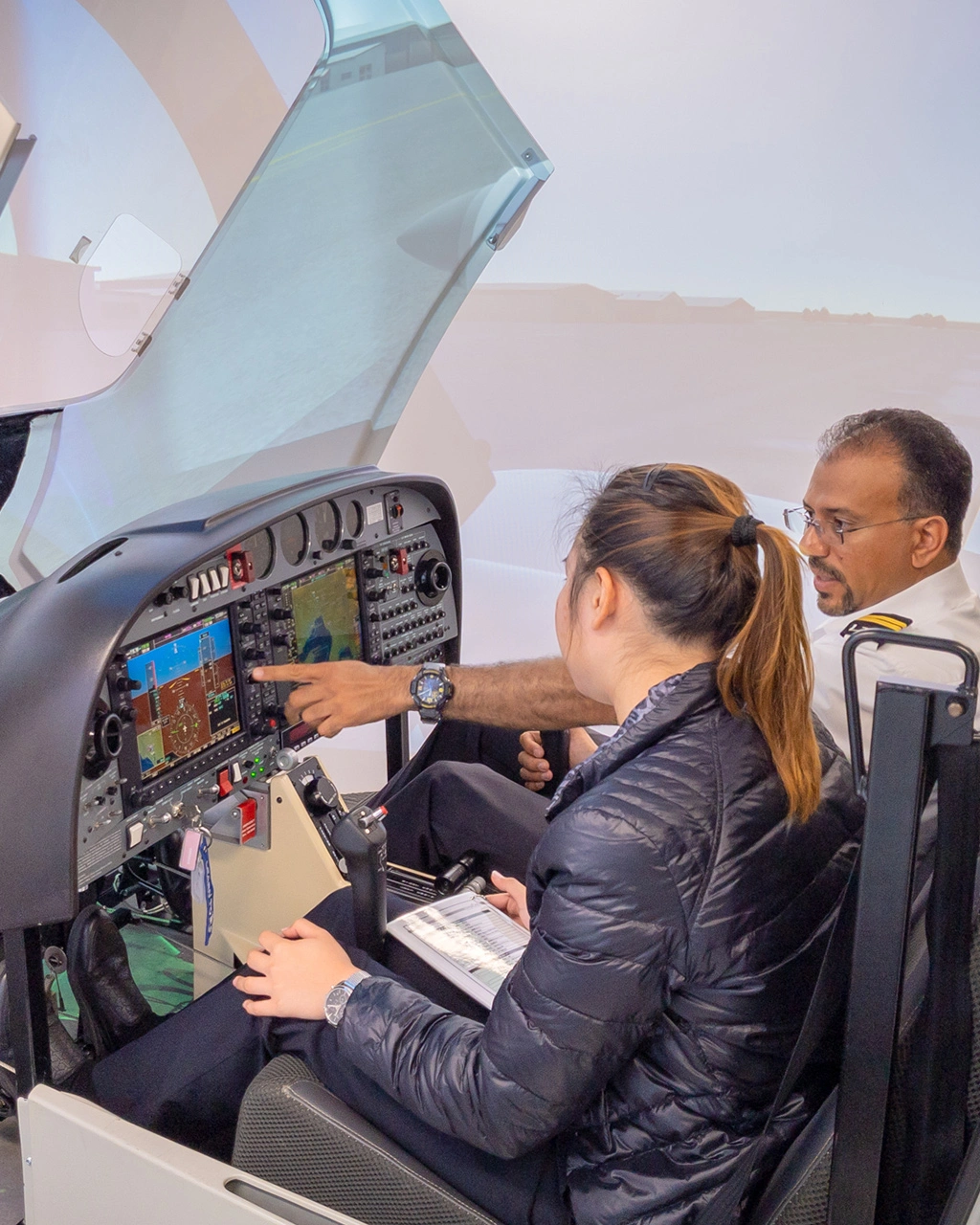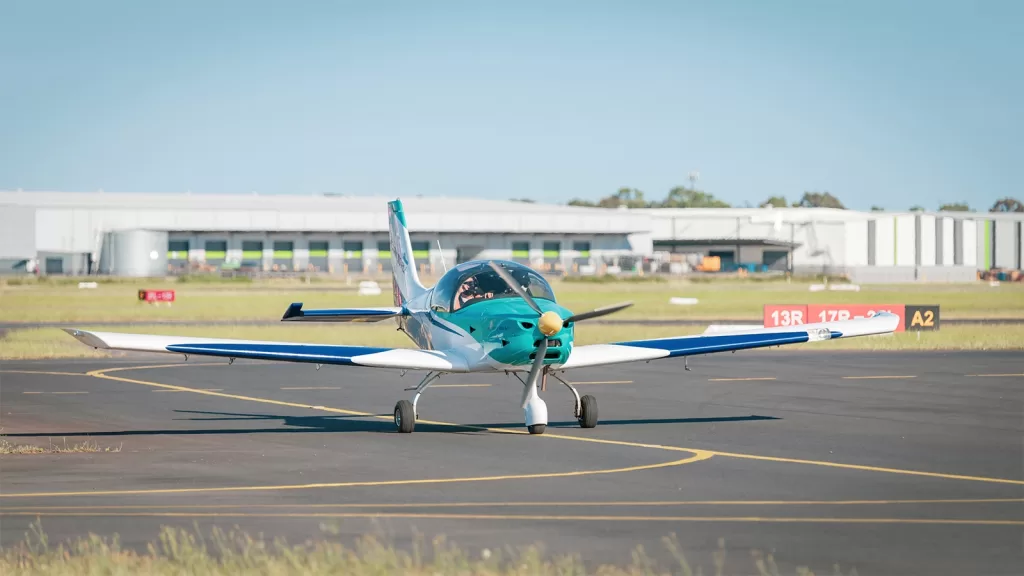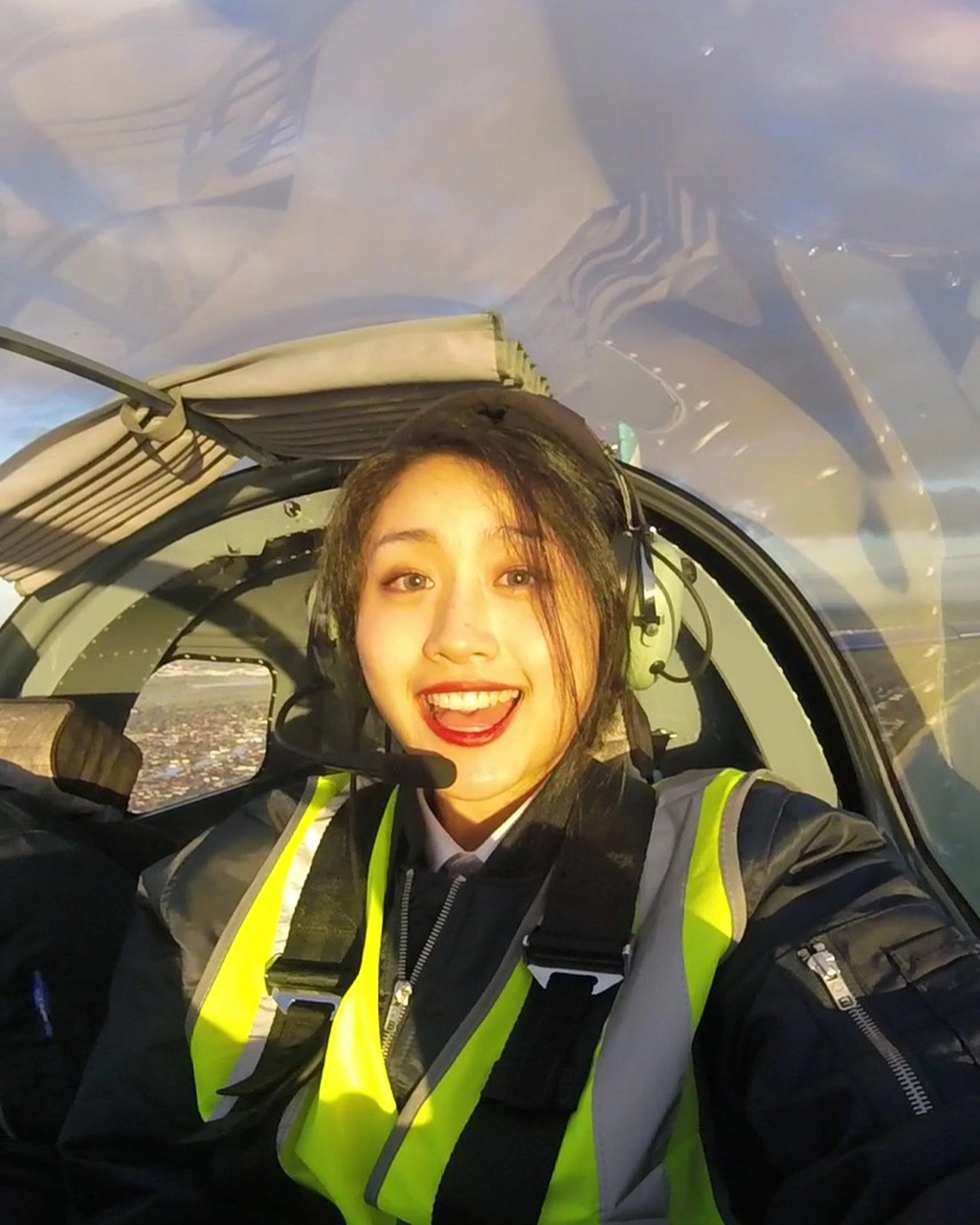Now flying an Airbus A350 for a major international airline, Second Officer Vincent Mok looks back on his cadet pilot training and discusses some of the lessons he learned.
While I was backing up my photos, the past year and a half at cadet school literally flashed before my eyes. It’s an amazing journey to go from an office worker to an airline pilot in the space of 15 months. I’d like to share with a few photos with you from my cadet pilot training and the stories behind them. Hopefully they’ll help you in your journey with aviation.
First Solo, First Milestone
The journey to my first solo didn’t go as smoothly as planned. I needed two checks before the training manager was happy to send me up. The night before my first solo check, I had 15 Xiao Long Baos and a plate of noodles at a restaurant notorious for their use of flavoring enhancer (MSG).
I couldn’t sleep because of the flushing and palpitations which didn’t help with the anxiety before the first solo. My final approach profile was inconsistent because my power adjustments were more spasmodic twitches than smooth and decisive.
Lesson Number 1: Healthy eating is as important as checking the weather before a flight
Lesson Number 2: Sleep quality is essential for learning especially in an accelerated environment
That night I had better quality of sleep. My circuit geometry, final approach profile and landings were consistently safe during my second solo check. Alone in the cockpit, while I did my flows and checklists, I saw the windsock pick up a little and started worrying about it approaching my crosswind limit.
“If tower announced a 10kt crosswind, I’d have to do my solo another day”
I taxied to the holding point, did the required checks, lined up and took off after tower clearance.
“200ft AAL, brakes applied, flaps up” I said out loud.
I reached for the flap lever but it was already at its upper stop, realising that I missed a part of the before takeoff flows and checks. If I was on a 737, I would have crashed at the end of the runway and killed 300 people behind me, destroyed a runway and the reputation of my airline. Distraction is the biggest threat in aviation.

Lesson Number 3: Don’t rush!
In the above photo taken after my solo, behind the smile, half tucked sweat stained shirt and tired legs were multiple lessons that I had learned. I’d been under a lot of pressure because I was the only one in my course without recent flying experience, despite having a PPL from 10 years ago.
After that solo flight, I knew that I had the potential to complete the course.
Memorable Flights
After the first solo, cadets progress through the following hurdles as part of the flying phase:
1 Recreational pilot licence/area solo standard
2 Private pilot licence (PPL) standard
3 Commercial pilot license standard
4 Single engine instrument rating standard
5 Multi-engine command instrument rating standard
6 Upset prevention and recovery training (UPRT)
The flying at each hurdle was both challenging and fun and reaffirmed my passion for aviation. I saw many sunrises, sunsets, coastlines, country airports as well as the world upside down from 6000ft high. I also recall the dread in my stomach during my UPRT but looking back was an utmost invaluable experience and was the most memorable.
“Do you actually get sick, or are you just scared?” My instructor asked while we were upside down in a roll.
“Imagine this was your Airbus and somehow the attitude is like this. Recover.”
Without much thinking, I adjusted the power, rolled wings level, fixed the pitch, and flew straight and level while the chicken I had at mess a few hours ago wanted to fly its way back out.

Another time during the PPL training phase, I was admiring the sunrise and the little houses along the coast I could see from 500ft.
“Enjoy it while it lasts”. The instructor said in a mocking manner as I increased the power to climb to 2500ft.
“You’ve just suffered a partial engine failure”. He placed his hand on the throttle and retarded it to a few inches of manifold pressure.
I immediately pitched for best gliding speed and performed trouble checks, then looked for a field nearby.
“You’ve still got thrust, I don’t feel like landing on a vineyard today”
“Oh yeh….Goolwa Airport is in the vicinity and it seems someone just took off from 01”. I turned the aircraft towards downwind, idle power, made a descending turn to base then final.
“You’re way too high. Do a touch and go and we’ll do a diversion after that”
I took flaps and landed around a third of the way down the runway.
“Why’d you make a full stop?”
My bladder had taken over controls and I taxied to the terminal where we all had a toilet break.
Lesson Number 4: While enjoying the beauty of flight, always be prepared for the unexpected
Weight Gain
“Everybody gains weight at cadet school” was a well known fact that our seniors, course mentors, and instructors stated again and again. We had access to buffet style food at the mess for breakfast, lunch and dinner.
The chef nicknamed me “Mr Six Eggs” after my breakfast choice, because there wasn’t enough time in the morning to say “Mr Six Eggs, Two Tomatoes, Bowl of Oatmeal, Scoop of Mushroom, Scoops of Baked Beans, Bowl of Yoghurt”.
Thankfully, one of my coursemates was obsessed with Arnie and I stumbled across photos of “Gympilot”, who used to be overweight but transformed himself into a muscle machine so that he could apply the required 60kg worth of force on a rudder during asymmetric flight on a DA42.
I built lots of friendships (and muscles) at that gym. It became my sanctuary in an otherwise stressful course.
Lesson Number 5: Make exercise a commitment
Cadet pilot training school was one of the most memorable, challenging and fulfilling part of my life. I’d highly recommend any aspiring pilot to consider this path to an airline career. The habits and lessons learned from cadet school lay the foundation for a career as an airline pilot and I attribute the following to my successful completion of the course:
1 Healthy eating is as important as checking the weather before a flight
2 Sleep quality is essential for learning especially in an accelerated environment
3 Don’t rush
4 While enjoying the beauty of flight, always be prepared for the unexpected
5 Make exercise a commitment

We’d like to thank Vincent very much for contributing this fantastic blog on cadet pilot training. Stay tuned for Vincent’s next guest blog on his journey to becoming an airline pilot.
To find out more about our flight training courses, email hello@learntofly.com.au or visit https://drift.me/learntofly/meeting to book a meeting and school tour.































